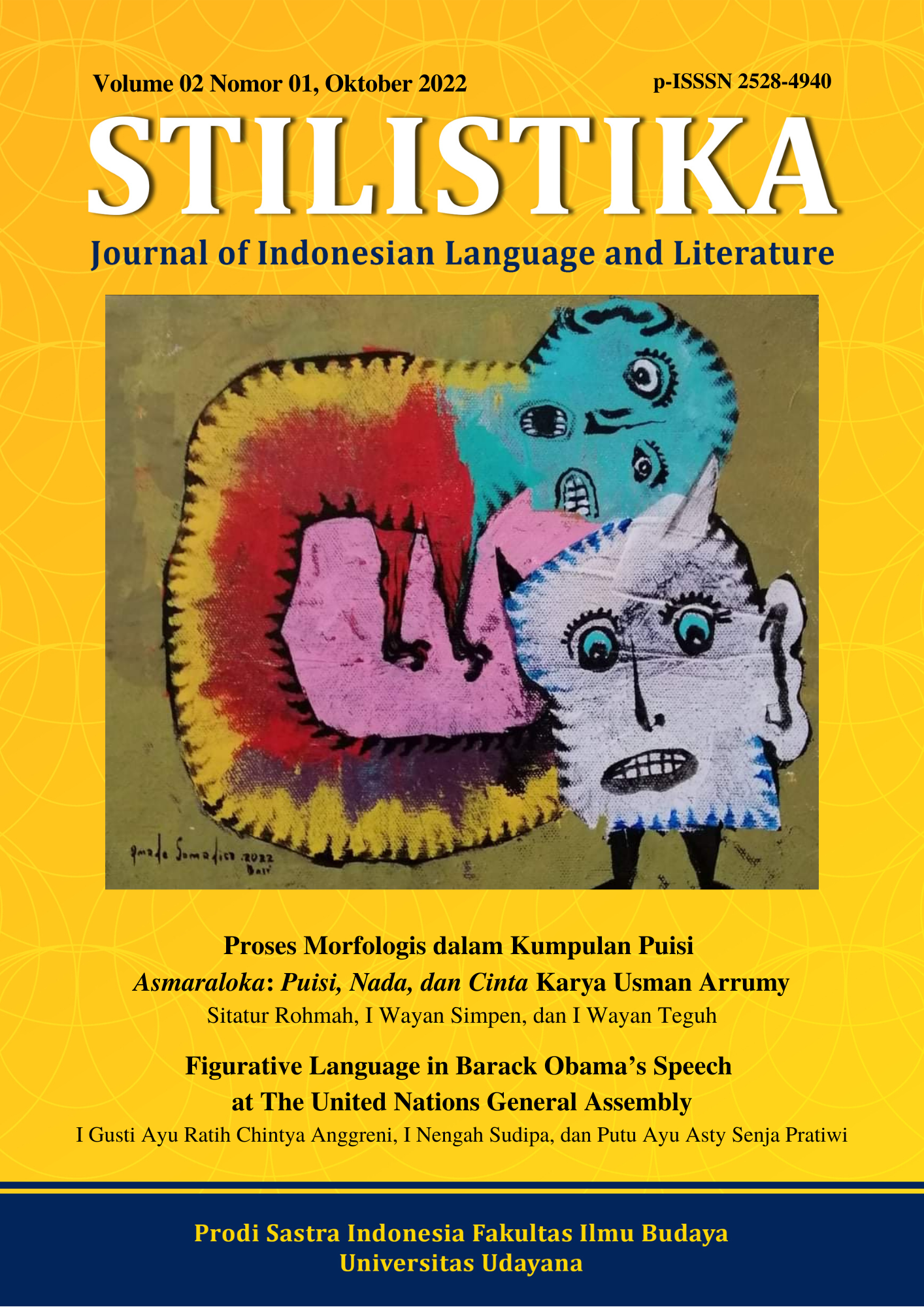Figurative Language in Barack Obama's Speech at The United Nations General Assembly
Abstract
Figurative language is a part of semantics study. Through studying semantics, meanings of words can be learnt. This study entitled “Figurative Language in Barack Obama’s Speech at The United Nations General Assembly” is aimed at identifying the types and analyzing the meanings of Figurative Language used by Barack Obama in his first speech at The United Nations General Assembly (UNGA). The theory stated by Wren & Martin (2000) and Leech (1981) were used in analyzing the data. The data was presented and explained descriptively in the third chapter of this research. Any sentences containing figurative language were differentiated by a code created by the researcher. A speech delivered by Barack Obama at United Nations General Assembly was used as the data source of this research. As a result, there are seventeen data were found containing seven types of figurative language, one data contains a metaphor, three data contain personification, two data contain a symbol, four data contain an apostrophe, four data contain verbal irony, one data contains antithesis, one data contain euphemism, and one data contains epigram. There were five theories of meaning by Leech (1981) implied in the speech, including conceptual, connotative, social, affective, and reflected meaning. As this study is focusing on the theory of figurative language, it is expected that the results will be valuable to students of English Literature or others. The figurative language and meanings applied in this research can be used to provide a clearer and better understanding of the meanings of figurative language.
Downloads
References
Gardiner, A.H. (1932) The Theory of Speech and Language. Oxford University Press.
Harya, T.D. (2017) ‘AN ANALYSIS OF FIGURATIVE LANGUAGES USED IN COELHOS’S NOVEL ENTITLED “ALCHEMIST”’, PREMISE JOURNAL:ISSN online: 2442-482x, ISSN printed: 2089-3345, 5(2), p. 46. doi:10.24127/pj.v5i2.815.
Leech, G. (1981) Semantics. Second Edition. Great Britain: Pelican Books.
Löbner, S. (2013) Understanding Semantics. New York, USA.: Routledge.
Nugroho, E.S.J. (2019) Figurative Language in Football Chants Created by Chelsea and Manchester United Fans. Universitas Sanata Dharma.
Oyesomi, K. and Salawu, A. (2019) ‘Assessing the Uniqueness of Indigenous Language in Advertising: Analysis of Figurative Language Used in Selected Telecommunication Yoruba Advertisement in Nigeria’, The Qualitative Report [Preprint]. doi:10.46743/2160-3715/2019.3878.
Ritchie, L.D. (2013) Metaphor. U.S: Cambridge University Press, New York.
Rohani, T. and Arsyad, S. (2018) ‘Semantic Analysis of Figurative Language Expressions in “Feature” Of The Jakarta Post’, JOALL (Journal of Applied Linguistics & Literature), 1(1), pp. 97–114. doi:10.33369/joall.v3i1.6168.
Wren, P.C. and Martin, H. (2000) English Grammar & Composition. New Edition. S.Chand.






